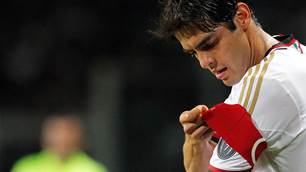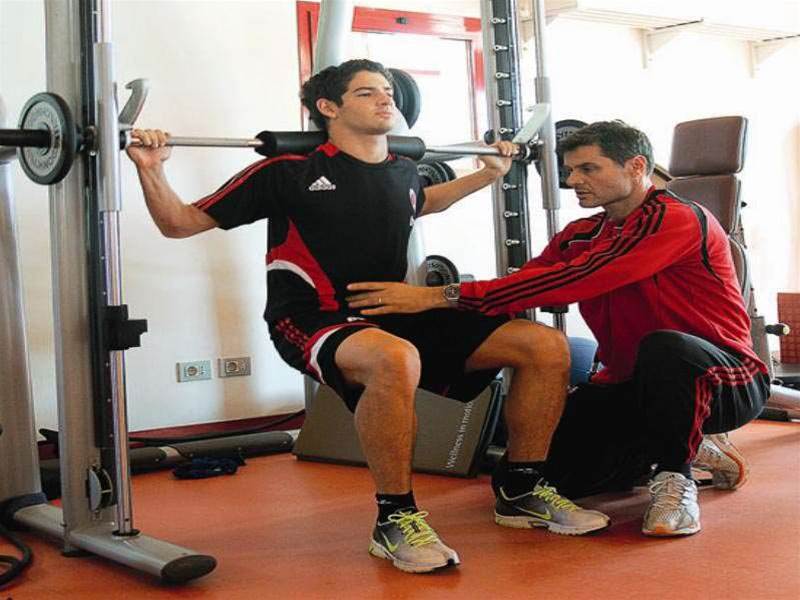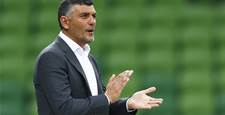FFT meets the genius behind the groundbreaking medical centre that extends players’ careers at Italian giants AC Milan.
To the untrained eye, this could be the inside of a NASA space station or the set from a sci-fi blockbuster. There are computer monitors as far as the eye can see, as a collection of men in white coats pour over charts and graphs. But this is not a mission control for a trip to Mars. This is AC Milan's renowned MilanLab, a huge scientific complex set among stunning parkland just south of Lake Varese. It is the most advanced medical facility in world football, and is widely credited as a place than can extend a player's career by five years or more.
Since its foundation in July 2002, data from the MilanLab has been central to the Rossoneri's team selection. The lab, which has built up a unique partnership with Microsoft, analyses aspects of a player's medical, psychological, sporting and scientific profile. They analyse the way they jump, the shoes they wear, how they move, how they think. The key findings are frequently reported to the first-team coach. They are also a key tool in the club's transfer dealings, with the opinions of the medical staff often decisive in who Milan buy and sell.
It was here that David Beckham spent three hours prior to his initial loan move from LA Galaxy in January 2009, undergoing an intense medical that included a velocity test as well as spinal motion, eye and dental examinations. Results suggested Beckham could be capable of playing top-level football to the age of 38. "I started laughing when the doctor said that to me," confesses Becks.
"He said, ‘no, I'm serious'." One test showed he had a higher VO2 max (the volume of oxygen that can be absorbed at maximum capacity) than many younger players, and the lab's specially tailored programme soon reduced Beckham's body fat from 13.7 per cent to 8.5 per cent. After Beckham's World Cup ending Achilles' tendon injury last month, the MilanLab credibility will now be fully tested.
The same boffins reportedly led Milan's decision to sell Andriy Shevchenko. It was believed he was past his best condition by the summer of 2006. And when Brazilian Ronaldo was trying to get his form back following his injury woes, the medics discovered that he had hyporthyroidism. With the right treatment, he shed 5kgs in weight.
The mastermind behind MilanLab is Belgian doctor Jean-Pierre Meersseman, who co-founded the facility with current Chelsea assistant manager Bruno Demichelis. As you might expect, Meersseman is no ordinary quack. He's been the personal GP of Italian Prime Minister Silvio Berlusconi since 1977.
MilanLab's successes over the past few decades can be traced back to Meersseman's arrival at the San Siro. Since he walked through the door of the club for the first time in 1986, the side have won seven Serie A titles and five European Cups. The changes he made to their medical set-up, even prior to MilanLab, have been acknowledged by Fabio Capello and Carlo Ancelotti as being hugely significant to the side's fortunes.
Ancelotti was so impressed, he took Demichelis with him to Chelsea, and is looking to build up an equivalent of MilanLab at the Blues' training base in Cobham. Defender Alex, 27, recently announced that he felt like a "young player" since Demichelis's arrival, and it could even end up helping England, reckons the Chelsea gaffer. "This is our way," says Ancelotti. "We used this in Milan and we're using it now. At the end of May, Terry and Lampard will be in very good condition and will do a fantastic World Cup."
Meersseman describes the changes he introduced at Milan as being "subtle to begin with, then fairly wide-scale as the years went on". Things are radically different from 22 years ago: training now includes yoga and pilates. The grounds of the lab include volleyball and tennis courts to encourage further activity and there are special running tracks cut into the stunning nearby forest for training exercises. But it's the mental approach to sports science where the most radical progress has been made.
"Despite my friendships with Mr Berlusconi and Mr Galliani, I knew football's traditions," says Meersseman about his softly-softly approach. "Football isn't always open to change and I think you have to accept that sometimes. Back then, the medical side of football was all about trying to treat injuries and didn't really consider how they could be prevented. Football was behind a lot of other sports in its medical approach in the '80s."
"I tried to instill a chiropractic philosophy early on. Structural problems in the body can bring about injuries in just the same way that a bad tackle can and I wanted the players and management to realise this. Through performing chiropractic checks, I was able to identify structural problems and address them, which helped reduce injuries. But it took me and my colleagues over a decade to put in place the tests and examinations which we have in MilanLab now, to give us a complete picture of what is going on inside a player."
The players certainly seem to like the results. "It is unique," believes Clarence Seedorf. "The philosophy here is that you are training to prevent injuries. When you are 30, some people think it is the end of your career, but there should be a change of mind because that is not based on facts. I'm getting fitter and better every year."
Key to the eventual success of MilanLab was the input of Demichelis who, as a former European karate champion, glass-blowing factory worker and qualified psychologist, had as interesting a background as his esteemed colleague. "MilanLab was a project myself and Bruno pioneered together," says Meersseman. "It was an idea we had for about a year before setting it up and were initially unsure of exactly what we wanted and how to go about starting it. Bruno is very well versed in sporting, psychological and medical culture and it made sense to put all these things together with the knowledge base I had."
Continued on next page...
Related Articles

Keisuke Honda retires from international football

Inside the mind of El Shaarawy













